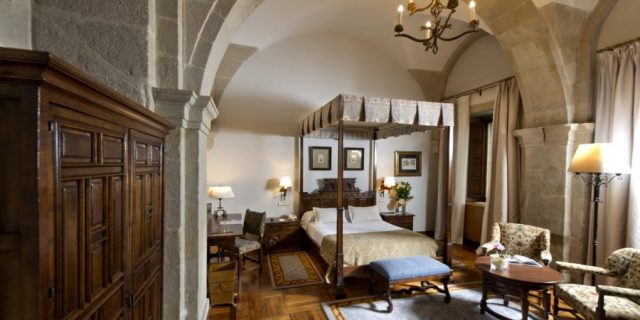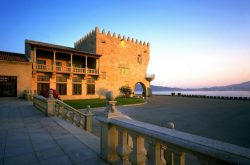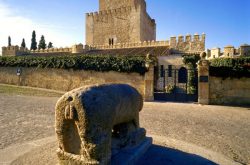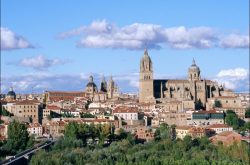Official UK partner to the Paradors, Pousadas, Pestana Hotels & Resorts, Les Collectionneurs (Chateaux), and European Hotels Collection. Keytours International, formerly Keytel International, your agent in the UK.
Camino de Santiago Routes
Every year, thousands of people from all over the world endeavour to embark upon the Way of Saint James. This thrilling adventure provides the perfect combination of personal challenge, companionship, sport, nature and culture. All along the route you will not only discover cathedrals, monuments and monasteries, but also areas of natural beauty with picture-perfect landscapes. On foot, by bicycle or on horseback, the journey through Spain to Santiago de Compostela is an incredible experience which everyone is always eager to repeat.
Whether you are looking to undertake the Camino de Santiago or just part of it, the Paradors provide perfect ‘stop overs’ en route. These unique state-owned establishments: country houses and meticulously restored and converted castles, palaces, convents and monasteries in their superb settings are only a short distance away. The luxury of the hotels combined with the awe-inspiring challenge of the journey makes this a once in a lifetime experience.
The Way of Saint James – which was declared a World Heritage site by UNESCO in 1993 – consists of a network of different paths. The route is perfectly signposted and can be done in stages. Whilst continuing along the route you will realise that every day is different; the variety of landscapes which one sees on route is just one of the contributing factors. Over the years the route itself has also evolved and there are many variations that may now be taken. Please find below the details of some of the most popular routes:
French Route
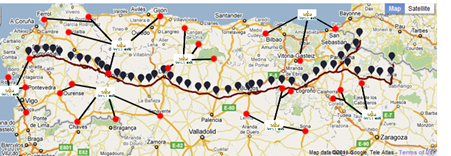
This appears to be the most popular of the variations. It begins in the Pyrenees and has two variants depending on where you choose to enter: Somport (through Aragon) or Roncesvalles (through Navarre). Both routes meet in the town of Puente la Reina, and then continue on towards Galicia through the regions of La Rioja and Castile-León.
The red dots on the map above show the locations of Paradors on the route.
Paradors on the route:
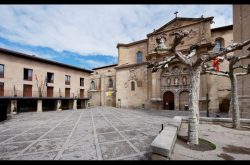
A former pilgrims’ hostel established in the 12th century by a local Saint, Dominic, is situated south of Bilbao on the old pilgrims’ route to Santiago de Compostela.
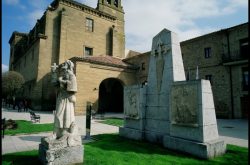
Located in the hospice of a former 16th century convent in the town of Santo Domingo de la Calzada, the ideal base from which to explore the beautiful landscapes of La Rioja wine region.
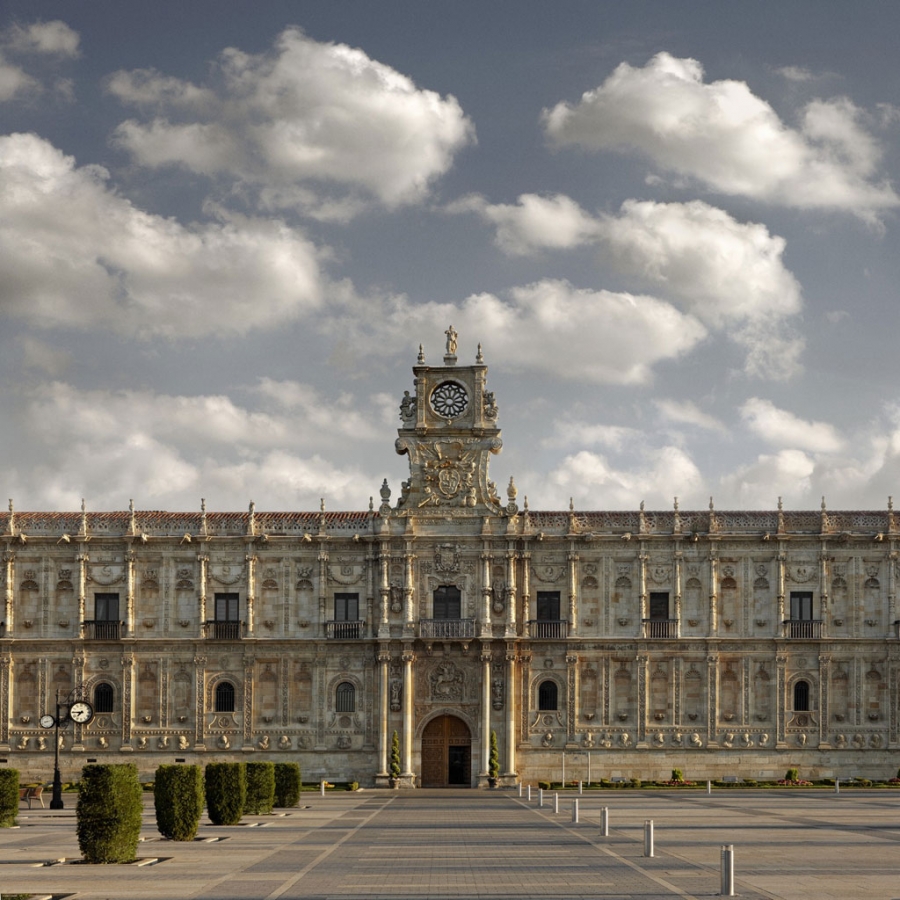
A magnificent Renaissance structure which is just one of many historic buildings in the ancient city founded by the Romans and later the capital of the medieval kingdom of León. It was intended to provide accommodation for pilgrims en route to Santiago.
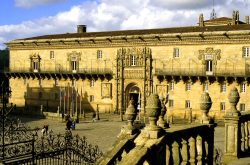
Built in 1499 by order of Ferdinand and Isabella to house visitors to Europe’s most famous pilgrimage city, the Hostal dos Reis Católicos, a 15th-century pilgrims’ hospice, is considered to be the oldest hotel in the world.
Northern Route

This route was first used by the pilgrims in order to avoid travelling through the regions that were once occupied by the Muslims in the Middle Ages. As a large part of the route runs along the coastline against a backdrop of mountains with breath-taking views overlooking the Cantabrian Sea, one of the greatest attractions of this route is its landscape. When Oviedo is reached, there is either the option to continue on the Northern Route or alternatively take the Primitive Route (Original Pilgrims’ Way).
The red dots on the map above show the locations of Paradors on the route.
Paradors en route:
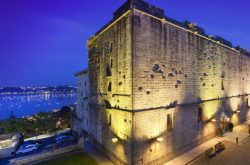
The Parador de Hondarribia, dominating the town from its highest point, occupies an ancient castle originally built by King Sancho II of Navarre in the 10th-century.
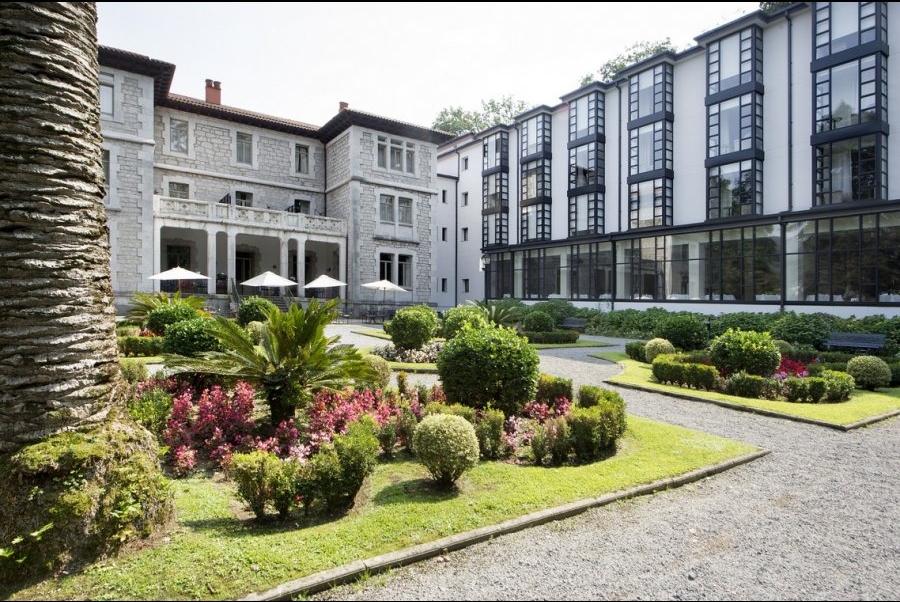
Comprises a 19th-century palace designed by Emilio de la Torriente for a local nobleman, plus a light and airy modern wing, designed in the Bauhaus style.
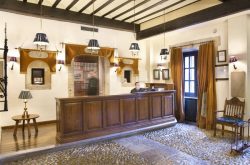
Built in the 17th and 18th centuries this was the ancestral home of the Barreda-Bracho family, and is located in the main square of one of the most attractive and well-preserved old villages in Spain.
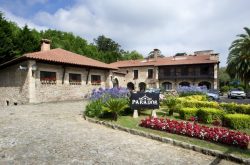
This originally served as an annexe to the nearby Parador de Santillana Gil Blas and beautifully maintains the traditional local style of architecture, with stone arches, pantiled roof, wooden balconies and beamed roofs.
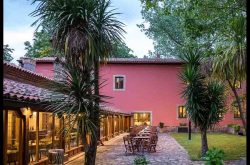
This attractive Parador, occupying a lovingly restored century-old water mill, and still surrounded by water, is in the beautiful Isabel la Catolica Park. Gijón enjoys a beautiful coastal location as well as being a short drive from the Asturian capital of Oviedo.
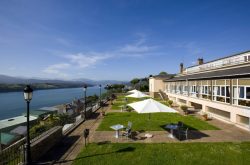
This Parador, with its privileged position at the mouth of the estuary, provides an ideal base for local activities, such as fishing, boating and golf, and the perfect place for a relaxing stopover whilst completing Camino.

The Parador is split between a 15th-century tower and a more modern extension, using traditional stonework. It is a good base for exploring the surrounding area, including the cathedral town of Lugo and the miles of glorious beaches along the wild Atlantic coast.
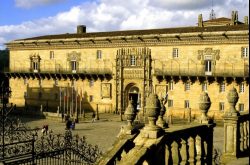
Built in 1499 by order of Ferdinand and Isabella to house visitors to Europe’s most famous pilgrimage city, the Hostal dos Reis Católicos, a 15th-century pilgrims’ hospice, is considered to be the oldest hotel in the world.
Other Paradors in close proximity:
Primitive Route (The Original Pilgrims' Way)
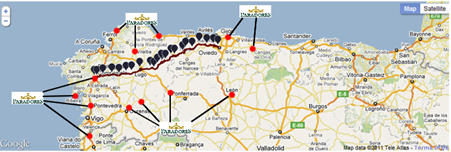
This route follows the original taken by King Alfonso II “The Chaste” in the 9th-century to visit the tomb of James the Apostle when it was first discovered. It starts in Oviedo and passes through the woods and valleys of Asturias, to link up with the French Route in Palas de Rei.
The red dots on the map above show the locations of Paradors on the route.
Built in 1499 by order of Ferdinand and Isabella to house visitors to Europe’s most famous pilgrimage city, the Hostal dos Reis Católicos, as this magnificent 5-star Parador is known, a 15th-century pilgrims’ hospice, is considered to be the oldest hotel in the world. This is a popular choice for the modern-day pilgrims looking to enjoy a little comfort and pampering as a reward for their labours.

